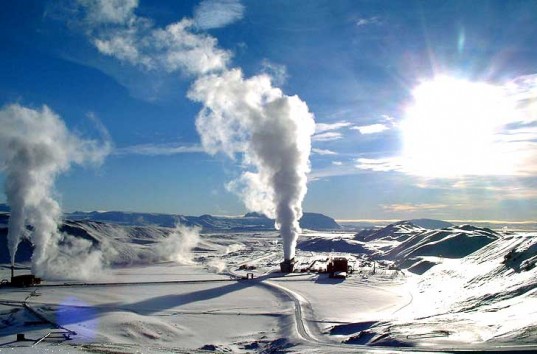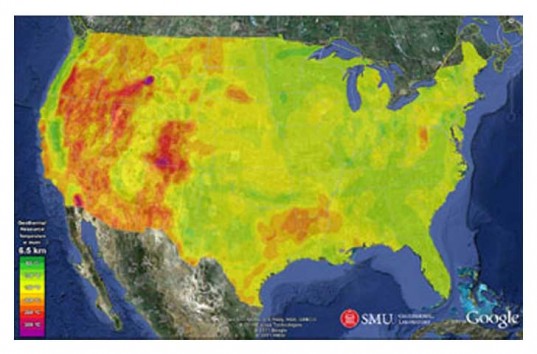
A new study shows that the United States has a geothermal power capacity that is ten times greater than the amount of energy produced by our current working coal-fired power plants. The study was funded by Google and conducted by Southern Methodist University’s Geothermal Laboratory where students and professors completed an in-depth map of the nation’s geothermal resources and found they aren’t just relegated to the areas in the west known for tectonic activity. The report revealed that even under the state of West Virginia, there is enough geothermal energy to immediately replace all of their coal-fired power plants.

The map above shows the findings of the study, with reds being the highest temperatures and greens the lowest. The researchers realized that though the east coast and central plains don’t have the high temperatures of the west, new technology can make it possible to use even the modest geothermal energy available to create electricity. A new technique called Low Temperature Hydrothermal, which uses naturally occurring subsurface fluids that exist at temperatures just below boiling to 300°F to create energy, is already being used in Alaska, Oregon, Idaho, and Utah and could be employed in many eastern states.
“Our study assumes that we tap only a small fraction of the available stored heat in the Earth’s crust, and our capabilities to capture that heat are expected to grow substantially as we improve upon the energy conversion and exploitation factors through technological advances and improved techniques” professor of Geophysics David Blackwell told TG Daily. Though the Low Temperature Hydrothermal energy production technique is promising and seems to be low impact, the study offers up some environmentally questionable techniques as well. The Enhanced Geothermal Systems technique employs essentially the same science as does hydrofracking, a very controversial method of removing natural gas from shale, and the Geopressure and Coproduced Fluids Geothermal technique pairs geothermal energy gathering with oil and gas production — definitely not a green option.
 Follow
Follow